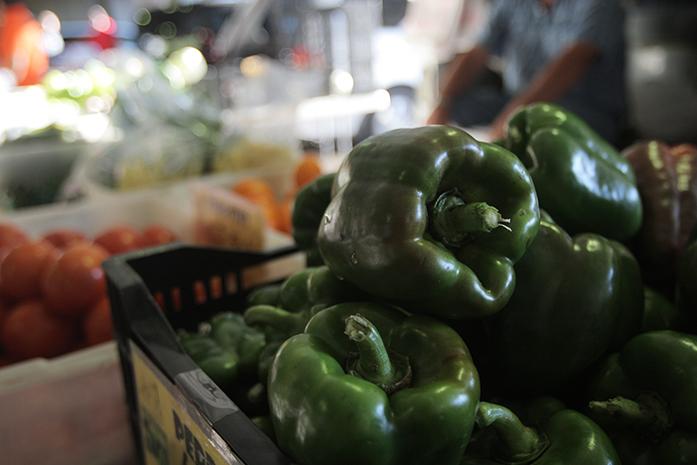By Tom Ackerman
In America, the land of opportunity and a country of privilege, mass amounts of food are thrown away every day while people struggle to find nourishment for their families.
According to feedingamerica.org, 12.6 percent of Iowans are food insecure, and 18,760 people in need reside in Johnson County.
Students at the University of Iowa discard an average of 3.5 ounces per meal after eating in the dining halls, according to an audit recorded two years ago at the UI.
“We know the population is increasing and there’s going to be more need for food,” said Bob Andrlik, the director of Table to Table, a local food-rescue organization.
“At the same time, 40 to 50 percent of it is wasted,” Andrlik said, citing data from the Food and Agricultural Organization.
He said the amount of food thrown away comes as a surprise to many people, especially those statistics directly affecting Iowans, where agriculture is a major part of the economy.
“It’s amazing that the alternative to donating the 744 tons of food would have it going to the landfill or a significant portion of it,” Andrlik said.
While there is a system to recover unused food in Iowa City, Andrlik said there is always a need, and a dialogue is starting to take place for awareness.
Maddie Cappel, a freshman who recently began working at the Hillcrest dining hall, said her employment changed her perspective, as strategies are being set to reduce food and water waste.
“I try to not take as much food,” she said. “I know how much hard work goes into prepping it and how much [the employees] care about what they do.”
The move to become greener aligns with the UI’s stated goal to be 40 percent self-sustainable by 2020, said Von Stange, director of UI Housing.
“When we’re serving 11,000 students a day, waste adds up pretty quick,” Fred Kurt, Hillcrest Marketplace manager, said of the 7,500 pounds of food produced weekly on campus.
Stange said wasting less would lower food costs for students, though the message is difficult to get across when most customers only buy a meal plan for a year or two.
In addition to trayless dining halls, a computer system has been put in place to better predict how much food needs to be cooked on a daily basis.
Kurt said the system keeps track of how much food is consumed daily and records overall patterns that occur in the dining halls.
“We’re not saying students should eat less,” Kurt said. “Just take what you need to start.”
Garbage disposals have also been eliminated from the dining halls, which Kurt said used 10 to 15 gallons of water per minute and ran constantly.
Housing & Dining has been assisted by a grant from the Department of National Resources labeled the Solid Waste Alternative Program, which has given $80,000 over the past few years to promote sustainability, Kurt said.
A new dishwasher, valued at $120,000, and new $40,000 “pulpers” for the dining halls have been installed. Pulpers compost food by taking out the water.
“Even if it’s not able to be reused to feed people, it’s at least not having a damaging effect on the infrastructure,” Andrlik said of composting.
Water use has dropped with the new dishwasher from 400 gallons per hour to 50 gallons per hour, Kurt said. With the amount of resources being saved, the university should make the money back in four years, he said.
Andrlik said food waste also breaks down and produces 21 times more harmful gases than other items thrown away, which is confirmed on endfoodwaste.org.
“Composting is a way to sequester that carbon and those greenhouse gases back into soil and be used to grow more food,” Andrlik said. “It’s another way of dealing with the waste in a productive manner.”
He said most of the food from the university is donated during breaks from school, and fraternities and sororities also give what would go bad over holiday breaks.
“Donations are unpredictable,” Andrlik said. “That’s part of our puzzle – to match what the donor is giving us to the agency that’s able to handle that type of food, and the capacity, so we can make a home for that food while it’s still usable.”
“Oftentimes it looks like the people who don’t need a meal are the ones who are only able to afford the food that’s really not good for them,” he said.



